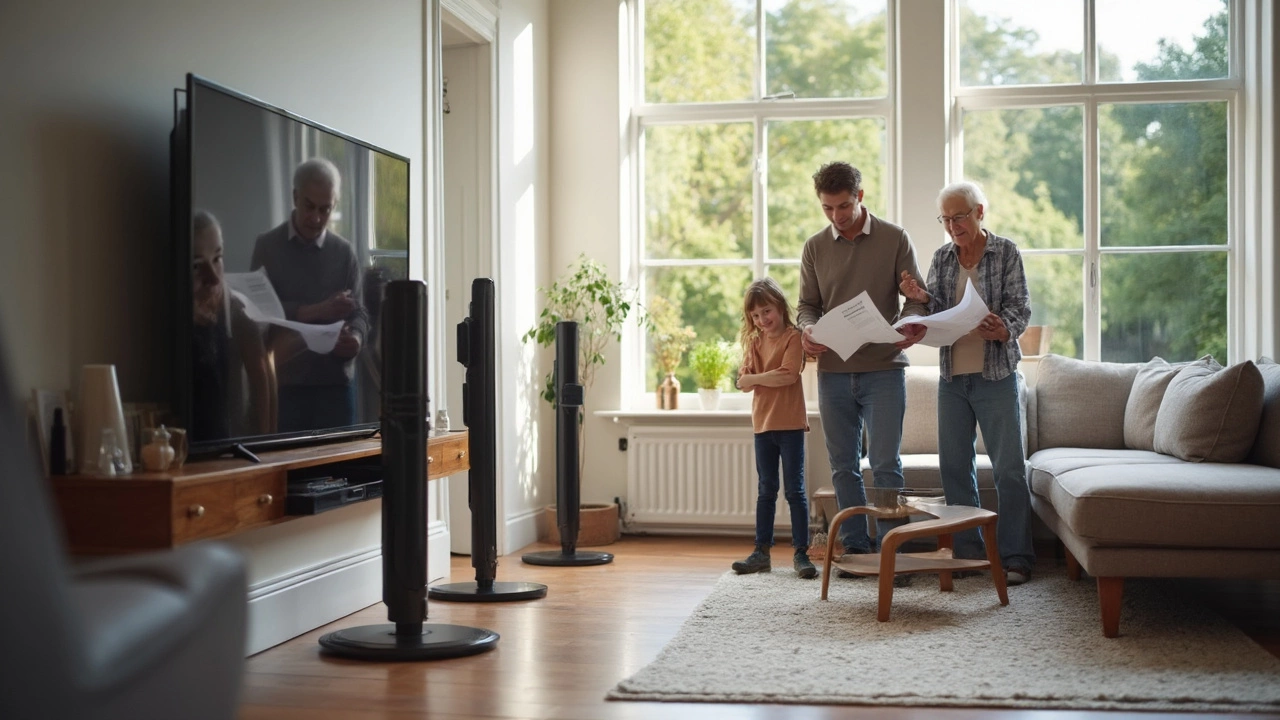Shopping for a new Samsung TV stand? Don't assume they're one-size-fits-all—Samsung TV stands can be surprisingly different, even between models that look alike. This article breaks down why Samsung uses different stands, how to spot compatibility issues, and how you can avoid wobbly setups or wasted purchases. Get smart tips for swapping stands, DIY hacks, and where to find replacements. You'll be ready to make your TV setup safer and way less stressful.
TV Compatibility Guide: Match Your TV to Your Space
Picking a new TV isn’t just about the brand or the resolution. It’s about making sure the screen fits your room, your furniture, and the way you watch. Below you’ll find the most useful, no‑nonsense advice to help you get the perfect match without a lot of guesswork.
Size and Viewing Distance
Measure the distance from your couch to where the TV will sit. A good rule of thumb is to divide that distance (in inches) by two. So if you sit 8 feet (96 inches) away, look for a screen around 48‑55 inches. Bigger screens work if you sit farther back, but too large a TV will make you move your head constantly – not comfortable.
Don’t forget ceiling height. The center of the screen should be roughly at eye level when you’re seated. If you mount the TV too high, neck strain will ruin your binge‑watch sessions.
Mounting, Wall Type, and Furniture
Most modern TVs come with VESA mounting patterns. Check the back of your TV for the hole spacing and compare it to the bracket you plan to buy. If you have drywall, use proper anchors or a stud finder to secure the mount. Concrete or brick walls need masonry bolts – the extra effort pays off in stability.
If you prefer a stand, make sure the TV’s base matches the width of your media console. A too‑narrow base can tip over, especially with taller cabinets. Keep cables organized with clips or a cable raceway; a tidy setup looks better and makes heating less of an issue.
Audio matters too. Thin wall panels or glass doors can absorb sound, so consider a soundbar or rear speakers that don’t rely on the TV’s built‑in speakers. Check that your audio system supports HDMI ARC or eARC for the best sync.
Lighting is another compatibility factor. Keep windows and lamps out of direct line with the screen to avoid glare. If you can’t control natural light, an anti‑glare screen or a matte wall paint helps keep the picture clear.Finally, think about future upgrades. Choose a mount with a tilt or full‑motion arm so you can adjust the angle later. That flexibility saves money when you switch to a bigger screen or different layout.
By matching TV size, mounting method, audio setup, and lighting, you’ll get a viewing experience that feels custom‑built for your home. No need for expensive consultants – just follow these simple steps and enjoy your new TV right away.
